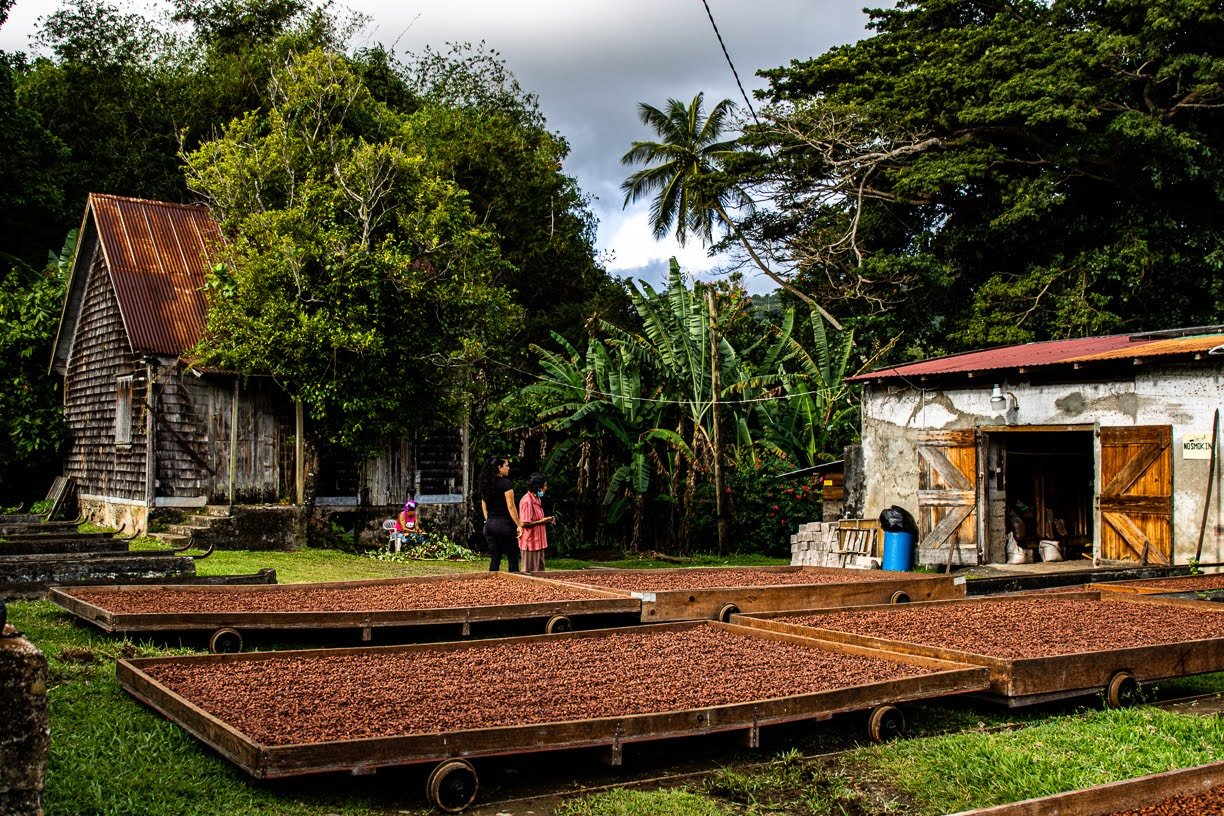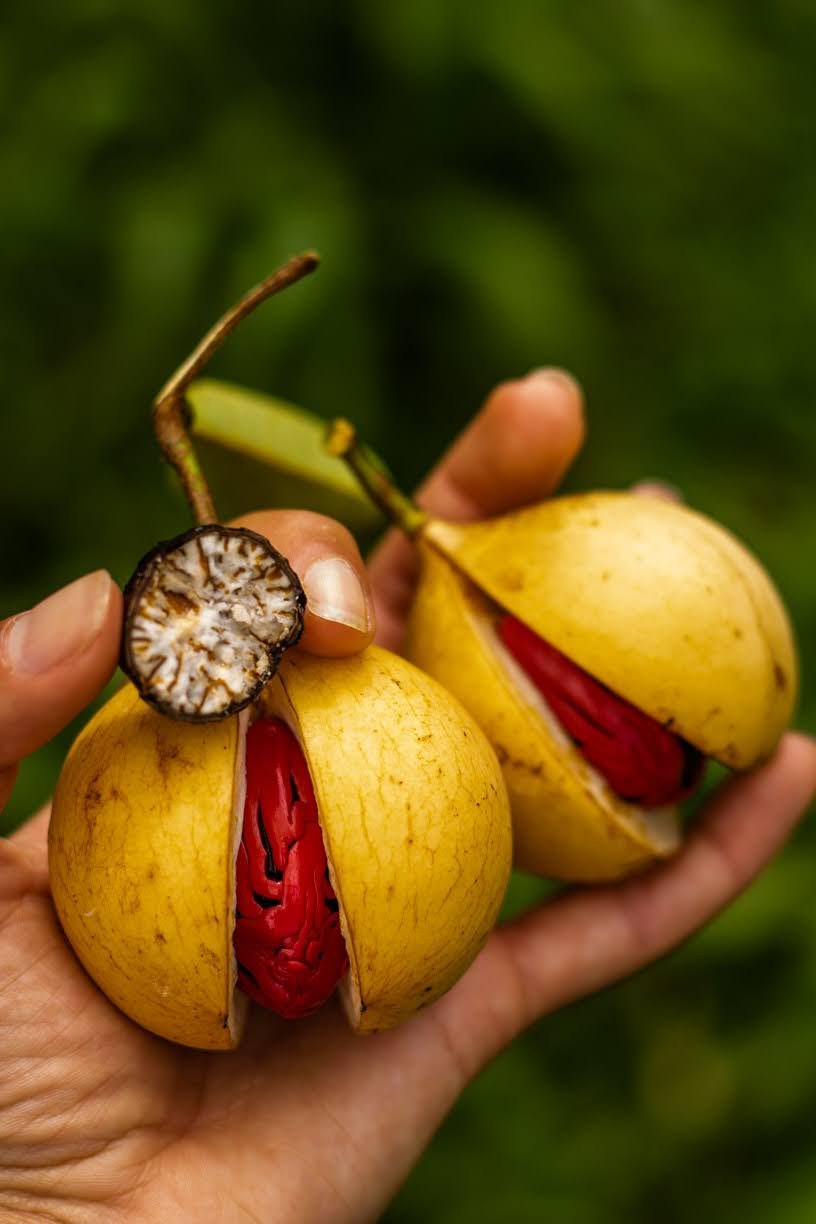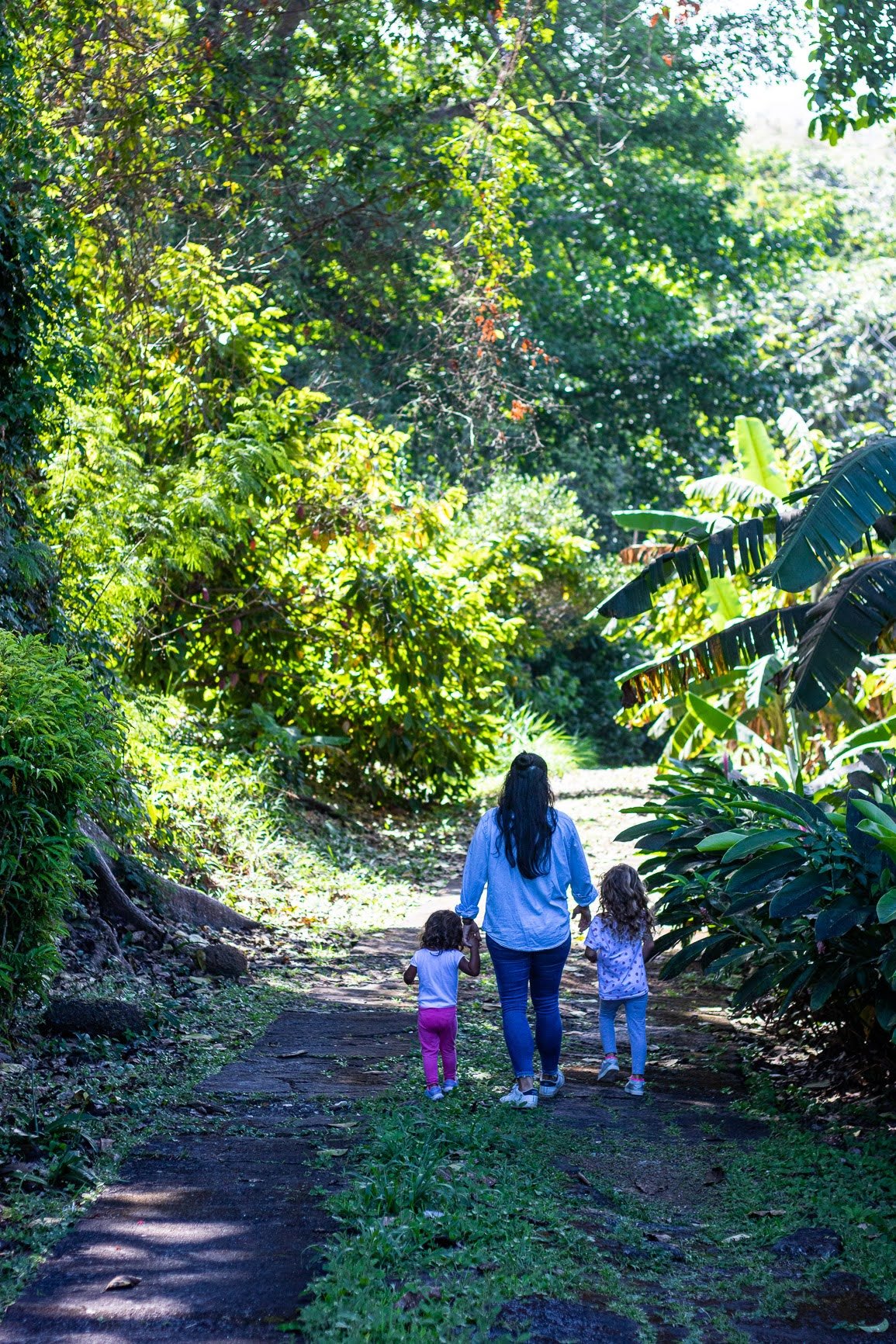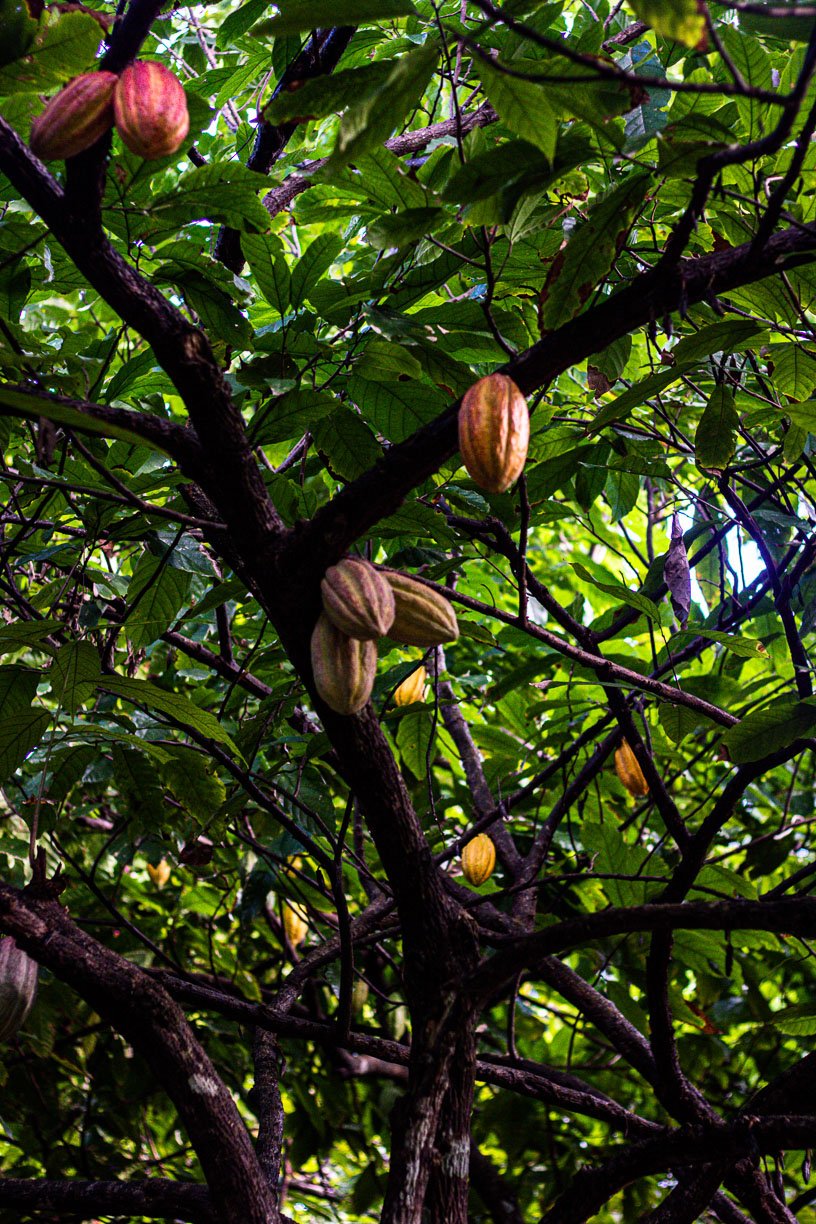L’Esterre Estate Organics
Less than an hour’s drive from the family-run, Calabash Luxury Boutique Hotel, is the maternal family home of the Garbutt’s. L’Esterre Estate sits neatly cushioned at the heart of the small Caribbean island of Grenada. In amongst the forested hilltops, the 70-acre estate is where the hotel sources 80% of its fresh fruits and vegetables.
Host to a tropical hotbed of biodiverse flora and fauna, the family’s 19th-century plantation house is enclosed by acres of dense and diverse horticultural vegetation, bound by a peaceful river, with the luxury of sea views. As well as growing fresh produce for the local market, the estate’s main crop is cocoa and nutmeg.
This land is where chocolate’s life begins. Though you won’t find clunky, heavy machinery or signs of Willy Wonka magic here. Breezes as calm as a whisper comb the silky, shadow-soaked air of the cocoa groves. Its forest floors delicately carpeted by crisp, fallen leaves, quietly decomposing into a spongy pulp by the red velvet earth beneath its feet. A far cry from the fast-paced modern world. Life is considerably slower here, more intentional.
The estate awakens October through April for cocoa harvest. All senses are interrupted by the pungent aromas of fermenting cocoa, accented by the warming spicy fragrance of freshly picked nutmeg and mace, harvested on the estate throughout the year.
Anyone who eats chocolate regularly knows it is a multi-sensory experience in itself. But to harvest your own cocoa pod directly from a cocoa tree. To unveil its ripe, lychee-like cocoa beans adds another layer of respect for the craft of chocolate-making.
The fermentation process is where the cocoa process really comes alive. Freshly harvested cocoa beans are added to ‘sweat boxes’, where the beans’ juicy pulp triggers the fermentation process. The beans are turned every two days, allowing aeration and flavour-development, slowly transforming into its characteristic chocolate colour. Specific to the estate’s terroir, the fermented beans are tinged a deep red, a direct result of the thick vegetation and diversity of fruit trees that grow in amongst the cocoa.
The warm, well-fermented beans, are laid out into the expanse of the wooden cocoa draws to dry. The piercing hot sun traps the cocoa beans’ fruity flavour, exhaling a piercingly aromatic chocolate-tinged fragrance in the process.
No food exploration is complete without a truly seed-to-cup experience. The journey comes full circle with a tasting of cocoa tea, a local hot beverage consisting of roasted cocoa beans which are ground to a paste with a blend of local spices; namely bay and cinnamon.




